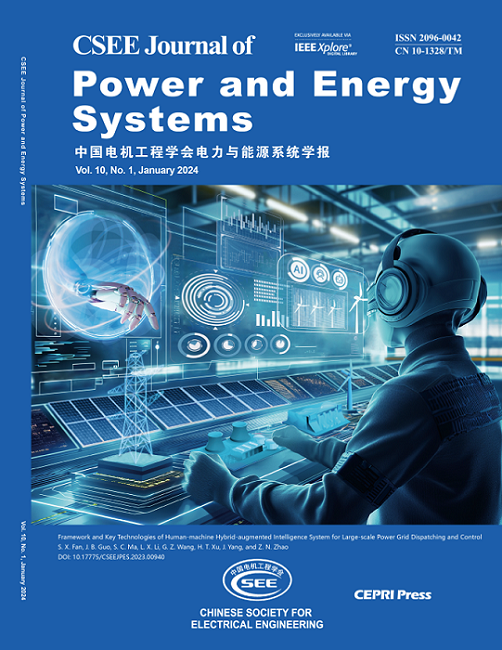Cyber-Physical Resilience Enhancement for Power Transmission Systems with Energy Storage Systems
IF 5.9
2区 工程技术
Q2 ENERGY & FUELS
引用次数: 0
Abstract
In a power system, when extreme events occur, such as ice storm, large scale blackouts may be unavoidable. Such small probability but high risk events have huge impact on power systems. Most resilience research in power systems only considers faults on the physical side, which would lead to overly idealistic results. This paper proposes a two-stage cyber-physical resilience enhancement method considering energy storage (ES) systems. The first stage calculates optimal planning of ES systems, and the second stage assesses resilience and enhancement of ES systems during the disaster. In the proposed model, cyber faults indirectly damage the system by disabling monitoring and control function of control center. As a result, when detection and response process of physical faults are blocked by cyber failures, serious load shedding occurs. Such a cyber-physical coupling mechanism of fault, response, restoration process is demonstrated in the modified IEEE Reliable Test System-79 (RTS-79). Simulation results show compared with the physical-only system, the cyber-physical system has a more accurate but degraded resilient performance. Besides, ES systems setting at proper place effectively enhance resilience of the cyber-physical transmission system with less load Shedding.利用储能系统增强输电系统的网络物理复原力
在电力系统中,当发生冰风暴等极端事件时,大规模停电可能不可避免。这种小概率但高风险的事件会对电力系统产生巨大影响。大多数电力系统复原力研究只考虑物理方面的故障,这将导致过于理想化的结果。本文提出了一种考虑到储能(ES)系统的两阶段网络物理弹性增强方法。第一阶段计算 ES 系统的最优规划,第二阶段评估 ES 系统在灾难期间的恢复能力和增强能力。在所提出的模型中,网络故障会使控制中心的监控功能失效,从而间接损害系统。因此,当物理故障的检测和响应过程被网络故障阻断时,就会出现严重的甩负荷现象。这种故障、响应和恢复过程的网络-物理耦合机制在修改后的 IEEE 可靠性测试系统-79(RTS-79)中得到了验证。仿真结果表明,与纯物理系统相比,网络物理系统具有更高的准确性,但弹性性能有所下降。此外,在适当位置设置 ES 系统可有效提高网络物理输电系统的恢复能力,减少甩负荷。
本文章由计算机程序翻译,如有差异,请以英文原文为准。
求助全文
约1分钟内获得全文
求助全文
来源期刊

CSEE Journal of Power and Energy Systems
Energy-Energy (all)
CiteScore
11.80
自引率
12.70%
发文量
389
审稿时长
26 weeks
期刊介绍:
The CSEE Journal of Power and Energy Systems (JPES) is an international bimonthly journal published by the Chinese Society for Electrical Engineering (CSEE) in collaboration with CEPRI (China Electric Power Research Institute) and IEEE (The Institute of Electrical and Electronics Engineers) Inc. Indexed by SCI, Scopus, INSPEC, CSAD (Chinese Science Abstracts Database), DOAJ, and ProQuest, it serves as a platform for reporting cutting-edge theories, methods, technologies, and applications shaping the development of power systems in energy transition. The journal offers authors an international platform to enhance the reach and impact of their contributions.
 求助内容:
求助内容: 应助结果提醒方式:
应助结果提醒方式:


